Attachment B - EDT User Guide 2013
Attachment B - EDT User Guide 2013.12.13.docx
Pilot Test of an Emergency Department (ED) Discharge Tool
Attachment B - EDT User Guide 2013
OMB: 0935-0217
Form
Approved
OMB No. 0935-XXXX
Exp. Date XX/XX/20XX
Attachment B:
ED Discharge Tool (EDT) User’s Guide
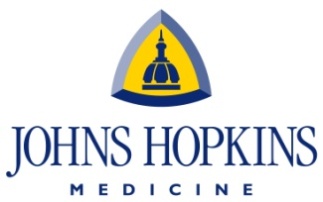
The Johns Hopkins Emergency Department Discharge Tool
User Guide
Table of Contents
General Guidelines 3
Intervention Index…………………………………………………………………………...3
Health Literacy………………………………………………………………………………4
Homeless……………………………………………………………………………………..4
Underinsured………………………………………………………………………………...5
Uninsured……………………………………………………………………………………5
Home Care…………………………………………………………………………………...5
Care Coordination…………………………………………………………………………...6
Intervention Decision Tree 7
Uninsured/Underinsured……………………………………………………………………7
Lack of Primary Care……………………………………………………………………….8
Psychiatric Disease…………………………………………………………………………9
Substance Abuse…………………………………………………………………………....10
Inability to Care for Self……………………………………………………………………11
Intervention Resources 12
PCP Appointments………………………………………………………………………….12
Medication Voucher………………………………………………………………………..13
Outpatient Psychiatry Appointment………………………………………………………..14
Detox Center Appointment………………………………………………………………...15
Transportation to Detox Center ……………………………………………………………15
Referral to Substance Abuse Rehabilitation Center………………………………………..16
Post-Discharge Phone Call ………………………………………………………………...17
Care Coordination………………………………………………………………………….18
General Guidelines:
The User Guide for the Johns Hopkins Emergency Department Discharge Tool (EDT) was developed to help Emergency Departments to tailor interventions in collaboration with locally available resources in their community. Each hospital will have different types of resources available and accessible by the local population. Emergency Departments can use the decision trees for each risk factor domain to identify appropriate interventions for patients identified as “at-risk” for early ED return using the Risk Screening Tool, and use the included resources to customize interventions appropriate to their community.
Implementation Tips:
-
Integrate the EDT into your ED workflow.
The EDT can be implemented using either a paper version or an electronic version. If your ED uses electronic medical records (EMR), check if your Information Technology (IT) department can integrate the EDT into your EMR.
Identify individuals who will be responsible for using the EDT to screen patients. Depending on the structure of your ED, this may be a nurse, case manager, social worker, care coordinator or a combination of different ED personnel.
The EDT should NOT hold up the discharge process. Consider providing interventions parallel to the clinical care or after the patient is discharged from the ED.
Set up community resources early.
Establish relationships with organizations around your hospital that serve the local community and provide healthcare services or social services.
Identify key contacts at these organizations. Inform them that you will connect them periodically with discharged ED patients.
Determine what free or low-cost resources exist at these organizations. If there are none, collaborate with these organizations to explore ways to develop free or low-cost options for ED patients.
Obtain resources for the EDT.
Funding will help determine the success and longevity of the EDT in your ED. Work with your hospital (e.g. quality department, readmission-prevention work group, CMO, etc…) to obtain resources to support this work. Funding can support personnel who will be responsible for implementing the EDT, creating space in the ED for patient discharge consultations, purchasing vouchers for patients, and more.
An index is provided below to identify the intervention bundles that address the basic needs related to each risk factor. Page numbers are provided to locate the Risk Factor Decision Tree and the associated Intervention Resources.
Intervention Index
Page |
Risk Factors |
Interventions |
Resource Page |
7
|
Uninsured and Underinsured |
PCP Appointments |
12 |
Medication Voucher |
13 |
||
Post-Discharge Phone Call |
17 |
||
Care Coordination |
18 |
||
8 |
Lack of Primary Care |
PCP Appointment |
12 |
Post-Discharge Phone Call |
17 |
||
9 |
Psychiatric Disease |
Outpatient Psychiatry Appointment and Referrals |
14 |
Post-Discharge Phone Call |
17 |
||
10 |
Substance Abuse |
Detox Center Appointment |
15 |
Transportation to Detox Center |
15 |
||
Referral to Substance Abuse Rehabilitation Center |
16 |
||
11 |
Inability to Care for Self |
Post-Discharge Phone Call |
17 |
Care Coordination |
18 |
In addition to the risk factors and interventions identified in the EDT, there are additional guidelines and resources that should be considered when using the tool to improve patient outcomes with Emergency Department discharges.
Health Literacy
According to the National Library of Medicine, the definition of Health Literacy is “the degree to which individuals have the capacity to obtain, process, and understand basic health information and services needed to make appropriate health decisions”. Poor health literacy results in patients not accessing preventive services, uncontrolled chronic conditions such as diabetes, hypertension, and HIV, and high utilization of emergency services. Patients presenting to an emergency department are typically under stress related to the condition for which they are seeking treatment, and the environment in an emergency department limits the amount of time clinicians can spend discussing the patient’s health, treatment and recommended follow-up. The time from emergency triage to discharge is typically short which limits the capacity of a patient to fully understand their treatment and discharge instructions. This is further aggravated if the patient already has poor health literacy at baseline.
There are several resources available regarding health literacy and associated tools. These resources can assist Emergency Departments in improving discharge education and instructions. For Example:
The Center for Disease Control and Prevention (CDC) published a comprehensive tool for addressing Health Literacy called “Simply Put, a guide for creating easy-to-understand materials” which provides examples and resources for improving verbal and written communication, readability of text, appropriate translation, cultural implications, and includes associated checklists. “Simply Put” can be found online: http://www.cdc.gov/healthliteracy/pdf/Simply_Put.pdf .
The Department of Health and Human Services (DHHS) provides additional resources which can be found on their website, such as the “Quick Guide to Health Literacy”, which contains Fact Sheets, Strategies, and several Resources: http://www.health.gov/communication/literacy/quickguide/default.htm .
The North Carolina Program on Health Literacy developed the “Health Literacy Universal Precautions Toolkit” which was commissioned by the Agency for Health Research and Quality (ARHQ) and is available on their website: http://nchealthliteracy.org/toolkit/. The toolkit includes resources for the “Teach-Back” Method, among other tools, as a way for clinicians to assess how well they educated or communicated health information as well as patient’s understanding: http://www.nchealthliteracy.org/toolkit/tool5.pdf
Homeless
The homeless population presents complex health and psycho-social needs in the Emergency Department. According to The National Coalition for the Homeless, people become homeless for various reasons including poverty, foreclosure or lack of access to affordable housing, lack of affordable health care, domestic violence, mental illness, and substance abuse. Many of these patients will have one or more of the risk factors identified in the EDT. If a patient is identified as being homeless they should be referred to the local clinic that provides services for the homeless. This patient population presents with complex needs and will require multiple resources to help integrate them into society, and would benefit from targeted resources that will not only address their immediate need for acute health care, but additional resources that aid in reducing barriers to care.
The following links will assist the Emergency Department in identifying available homeless service in their community:
Directory of National, State and Local Homeless Advocacy Coalitions: http://www.nationalhomeless.org/directories/directory_advocacy.pdf
Directory of National Organizations: http://www.nationalhomeless.org/directories/directory_national.pdf
Directory of Local Homeless Service Organizations: http://www.nationalhomeless.org/directories/directory_local.pdf
Homeless Shelter Locator http://www.shelterlistings.org/
Underinsured
Patients identified as having insurance, but are unable to access specialty services, are considered underinsured. These patients will require additional resources to follow the recommended discharge plan. These patients present unique challenges to the Emergency Department as often the condition at presentation requires specialty services not covered by their insurance benefits. Underinsured patients may have barriers to accessing follow-up care as recommended at discharge and will represent to the Emergency Department for continued or worsening symptoms.
Create partnerships between the Emergency Department and specialty clinics within the hospital’s health system (i.e. Neurology; Orthopedics; Pain Management; Cardiology; ENT; etc.) to reduce barriers in receiving acute follow-up and to provide low or no-cost post-emergency care. Identify if the hospital provides financial assistance to patients who have medical need, have accrued high medical bills, and do not qualify for additional insurance coverage. Hospitals may have existing charitable or indigent patient assistance programs that can assist with treatment coverage. Identify if patients can pay in installments or by using a sliding scale fee.
A “single case agreement” can be made if the patient requires care not accessible within their insurance network. It is a contract between an individual’s health insurance company and the health care provider which allows that patient to be treated under current benefit coverage. These are determined on a case-by-case basis and are limited to the specific treatment or condition. A referring physician within the insurance network, such as the primary care provider (PCP) will need to provide justification of the type of treatment required and how the out-of-network provider is uniquely qualified to provide the recommended care.
Uninsured
Patients identified as uninsured should be provided resources for applying for health insurance coverage. The Department of Health and Human Services provides a tool to assist in indentifying resources across the country: http://finder.healthcare.gov/ and provides health care benefits available for each State and customized to the needs of the individual. Patients meeting eligibility criteria can apply for medical benefits with the Department of Social Services (Medicaid) or Social Security Administration (Medicare). Uninsured patients have many of the same challenges as the underinsured and should be referred to the same resources if applicable.
Home Care
Patients being discharged from the Emergency Department may need additional assistance at home to support chronic conditions requiring skilled nursing, therapy, or assistance with mobility and activities of daily living (ADLs). Home Care services may include wound care, high risk medication education, infusion services, physical and occupational therapy, etc. These services must be implemented under the order of a physician which is the patient’s primary care provider or specialist overseeing the care of a specific condition. Skilled services are generally covered for a defined length of time for patients meeting eligibility requirements. Home Health Aides are non-skilled services that assist with medication compliance, bathing, and household support is not covered by most insurance benefits. Patients will have to pay out-of –pocket or apply for additional insurance coverage for long-term home care. To locate local home health services:
National Association for Home Care and Hospice: http://www.nahcagencylocator.com/
Patients receiving Medicare and Medicaid can apply for a Medicaid waiver program. To be a waiver participant, an individual must be medically qualified, certified for the waiver’s institutional level of care, choose to enroll in the waiver as an alternative to institutionalization, cost Medicaid no more in the community under the waiver than he or she would have cost Medicaid in an institution, and be financially eligible based on their income and assets. Search the website for the State’s Department of Health regarding information on applying for waiver assistance programs.
Care Coordination
Care Coordination is a multidisciplinary approach to improve patient outcomes by identifying patient needs, barriers to care, and linking patient with appropriate resources to facilitate post-emergency care. Coordination may be done between emergency and specialty provider to identify optimal treatment plans; addressing complex care needs and discharge planning by social workers or nurse case managers; transition care; and linking acute care services with outpatient post-acute care with home visits, primary care follow-up, etc. The care coordination model should reflect the needs of the Emergency Department and the population it serves.
Patients referred to the care coordination model should meet criteria for being at high risk for discharge failure and early return to the Emergency Department. Patients should be provided the standard care resources available to meet their needs. Patients identified as at risk and demonstrating poor health literacy, barriers to access care or report limited support in the community, or who have high risk conditions or take high risk medications should be considered for referral to care coordination resources. These may require additional support and education to address health care needs.
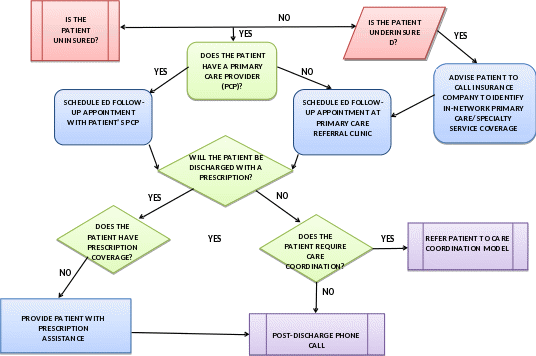
Uninsured/Underinsured

Lack of Primary Care
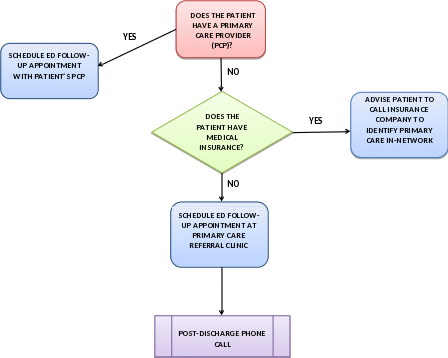

Psychiatric Disease
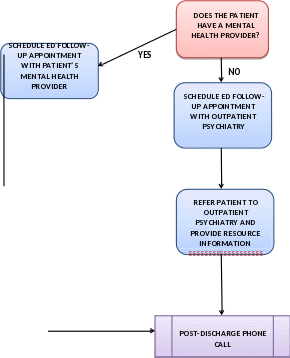
ddddddddddddd
Substance Abuse
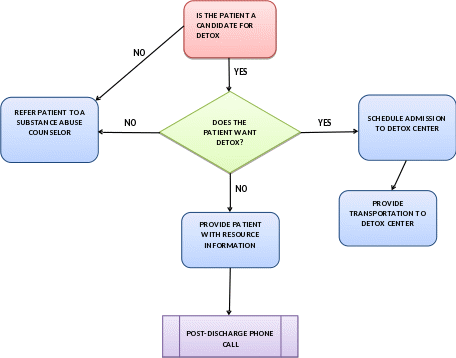

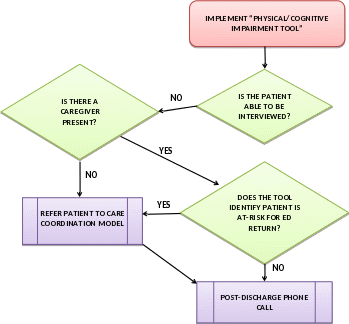
Inability to Care for Self and/or Cognitive Impairment
Yes

Intervention Resources
A. |
PCP Appointment |
|
Staffing |
Scheduling Assistant |
This task does not require a clinician to complete, but experience or training in insurance policies and process; and must have access to patient demographics. This role can be filled by Registration or Patient Service Coordinators, Discharge Planners; Unit Secretary, etc. |
Resources |
Primary Care Clinics within the hospital health system;
|
A clinic within the same health system will have access to Hospital Emergency Department records for continuity of care. Identify if the clinic is able to provide low-cost services for the uninsured (i.e. sliding scale fee). Information should include: Clinic location, number, and map/directions. |
External Partnership |
Federal-Funded Health Clinics;
Charitable Clinics
|
Federal-funded and charitable clinics will be able to provide health services at no/low cost or on a sliding scale fee. The Health Resource and Service Administration (HRSA) offers a locator tool to identify nearby clinics: http://findahealthcenter.hrsa.gov/Search_HCC.aspx |
Tools |
Access to scheduling software;
Reference list for area clinics |
|
Alternative Resources |
List of community health clinics in the area;
|
|
B. |
Medication Voucher |
|
Staffing |
Patient Service Coordinator;
Care Coordination model |
A non-clinical staff member can be responsible for providing medication vouchers to those patients in need if criteria guidelines are drafted to include verification of insurance, financial income, and category of medications. Including a care coordinator, such as social work, would offer a better assessment of their access to health care and provide patients with additional resources. |
Resources |
Pharmacy within hospital health system |
Pharmacy must have a mechanism by which to waive the cost of medication, or to bill to a dedicated cost-center. |
External Partnership |
|
|
Tools |
|
|
Alternative Resources |
|
|
C. |
Outpatient Psychiatry Appointment |
|
Staffing |
Scheduling Assistant |
This task does not require a clinician to complete, but will require experience or training in insurance policies and process; have access to patient demographics. This role can be filled by Registration or Patient Service Coordinators, Discharge Planners; Unit Secretary, etc. A detailed assessment may need to be available to assist with scheduling.
A clinician or other mental health professional may be an alternative if outpatient psychiatry resources vary to ensure the patient is referred to the best resources to meet their need. |
Resources |
Mental Health Clinics within hospital Health System;
|
A clinic within the same health system will have access to Hospital Emergency Department records for continuity of care. Identify if the clinic is able to provide low-cost services for the uninsured (i.e. sliding scale fee). |
External Partnership |
Community Mental Health clinics
|
Identify local outpatient mental health clinics that are able to provide health services at no/low cost or on a sliding scale fee for the uninsured, or can accommodate multiple insurance plans.
The Substance Abuse and Mental Health Services Administration (SAMHSA) provides a clinic locator: http://findtreatment.samhsa.gov/ |
Tools |
Access to scheduling software;
Reference list for area clinics |
Create a system by which to schedule an appointment within the clinic’s system outside of business hours through the Health System’s electronic medical record (EMR).
Alternatively, clinics will need to be called directly during business hours. |
Alternative Resources |
List of local mental health resources;
Mental Health and Crisis Intervention centers in the hospital catchment area |
If an appointment cannot be made on behalf of the patient, provide the patient with a resource list of area clinics they can receive care.
Develop a resource list that details location, contact information, hours of operation and services provided. Use the SAMHSA locator tool to identify clinics and resources.
Identify referral criteria and communication plan to improve coordination of care. |
D. |
Detox Center Appointment |
|
Staffing |
Clinician: Nurse; Physician; Mid-Level Provider or Care Coordinator |
Referrals should include substance abuse assessment and counseling in the Emergency Department and therefore requires a clinician. |
Resources |
Hospital System:
|
Criteria to refer a patient to detox includes current use of substances to cause a physical addiction including alcohol, heroine and benzodiazepines. The patient must voluntarily consent for treatment and be medically stable. |
External Partnership |
Local Area:
|
Develop referral criteria with local detox centers to improve appropriate transition to level of care. Information: Detox center location, number, and map/directions |
Tools |
Detox resource list and refer algorithms |
|
Alternative Resources |
Provide patient with a resource list to self-refer to detox, if an appointment or admission is not possible from the ED. |
The website for the Substance Abuse and Mental Health Service Administration provides locator tools for resources across the country: http://www.samhsa.gov/treatment/ |
F. |
Transportation to Detox Center |
|
Staffing |
Scheduling Assistant |
This task does not need a clinician to complete and they must have access to patient demographics. This role can be filled by Registration or Patient Service Coordinators, Discharge Planners; Unit Secretary, etc. |
Resources |
Shuttle Services available within hospital health system |
If the hospital provides shuttle service, it is advised to provide the transportation for a patient being discharged from the ED to the detox center as opposed to allowing them to arrange own transportation or use public transportation. The patient will not meet the medical need for an ambulance transport. |
External Partnership |
Local Taxi services |
Create a partnership with the local taxi service to accept to transport patients to an arranged destination and to bill charge services to a dedicated hospital cost center. This will require a agreement with service provider on the type of patients who can safely use the taxi service and protocol for drivers to follow to insure patients go to the address designated by hospital referral. |
G. |
Referral to Substance Abuse Rehabilitation Program |
|
Staffing |
Clinician: Nurse; Physician; Mid-Level Provider or Care Coordinator |
Referrals should include substance abuse assessment and counseling in the Emergency Department and therefore requires a clinician. |
Resources |
List of local mental health resources |
The Department of Health and Mental Hygiene for the hospital’s state will have a list of mental health resources available for the state. Including resources for counseling, crisis intervention, etc.
The website for the Substance Abuse and Mental Health Service Administration provides locator tools for resources across the country: http://www.samhsa.gov/treatment/
Develop a resource list that details location, contact information, hours of operation and services provided. |
External Partnership |
Mental Health and Crisis Intervention centers in the hospital catchment area |
Identify referral criteria and communication plan to improve coordination of care. |
H. |
Post-Discharge Phone Calls |
|
Staffing |
Clinician: Nurse; Physician; Mid-Level Provider or Care Coordinator |
Staff implementing post-discharge phone calls should be skilled in clinical care to review discharge instructions, medication, and transition to outpatient care. |
Resources |
|
|
External Partnership |
|
|
Tools |
|
Patient’s current contact information including phone calls and address to successfully reach patient post-discharge.
Algorithms and guidelines to provide support if needed post-discharge.
Documentation workflow |
Alternative Resources |
Non-clinical administrative staff |
If the purpose is to follow-up with patient to provide a scheduled appointment and not discuss discharge instructions, a non-clinician can be recruited to assist with calls. This role can be filled by Registration or Patient Service Coordinators, Discharge Planners; Unit Secretary, etc.
|
Teach Back method is recommended to assess comprehension of discharge instructions and any new information discussed in the post-discharge call. |
||
I. |
Care Coordination |
|
Staffing
|
Social Work |
Crisis intervention, psycho-social support, community resources, substance abuse, mental health, vulnerable persons, domestic violence, safety, discharge planning, grief counseling, etc.
|
Nurse Case Manager |
Facilitating medical and surgical follow-up, specialty care referrals, discharge planning, medication reconciliation, community resources, level of care determination, etc.
|
|
Transition Care |
Clinicians that outreach with patient post discharge to ensure follow-up, access to care, medication compliance and health education regarding their diagnosis or chronic conditions. This can be a nurse, respiratory therapist, social worker, community health worker, etc.
|
|
Physician or Mid-Level Provider |
Bridge care between emergency visit and outpatient follow-up, referrals, prescription management. |
|
Financial Counselor |
Assess financial need and link to available resources, application for medical financial assistance programs, etc. |
|
Mental Health Professional |
Psychiatric assessment, resource referral, counseling |
|
Resources |
|
Care coordination models will vary according to available staff and resources. Any combination of care coordination staff can be successful to assist with complex discharges and post-discharge follow-up needs. Care coordination staff will assess patient needs and identify appropriate resources to address discharge and access to care needs. |
External Partnership |
|
|
Tools |
|
|
Alternative Resources |
|
|
Public
reporting burden for this collection of information is estimated to
average 0
minutes per response, the estimated time required to complete
the survey. An agency may not conduct or sponsor, and a person
is not required to respond to, a collection of information unless
it displays a currently valid OMB control number. Send
comments regarding this burden estimate or any other aspect of
this collection of information, including suggestions for reducing
this burden, to: AHRQ Reports Clearance Officer Attention: PRA,
Paperwork Reduction Project (0935-XXXX) AHRQ,
540 Gaither Road, Room # 5036, Rockville, MD 20850.
| File Type | application/vnd.openxmlformats-officedocument.wordprocessingml.document |
| Author | admin |
| File Modified | 0000-00-00 |
| File Created | 2021-01-28 |
© 2026 OMB.report | Privacy Policy